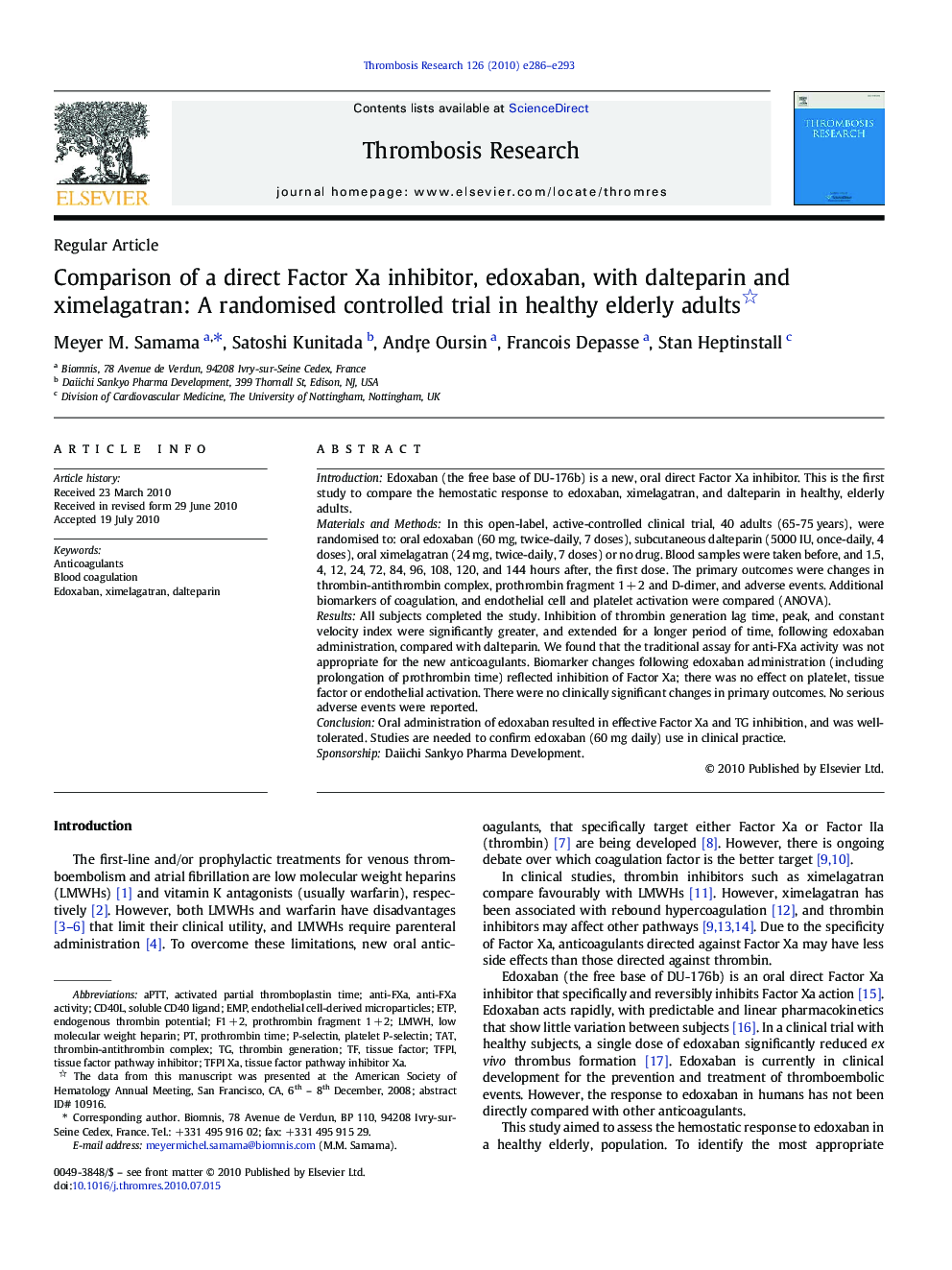| Article ID | Journal | Published Year | Pages | File Type |
|---|---|---|---|---|
| 3027731 | Thrombosis Research | 2010 | 8 Pages |
IntroductionEdoxaban (the free base of DU-176b) is a new, oral direct Factor Xa inhibitor. This is the first study to compare the hemostatic response to edoxaban, ximelagatran, and dalteparin in healthy, elderly adults.Materials and MethodsIn this open-label, active-controlled clinical trial, 40 adults (65-75 years), were randomised to: oral edoxaban (60 mg, twice-daily, 7 doses), subcutaneous dalteparin (5000 IU, once-daily, 4 doses), oral ximelagatran (24 mg, twice-daily, 7 doses) or no drug. Blood samples were taken before, and 1.5, 4, 12, 24, 72, 84, 96, 108, 120, and 144 hours after, the first dose. The primary outcomes were changes in thrombin-antithrombin complex, prothrombin fragment 1 + 2 and D-dimer, and adverse events. Additional biomarkers of coagulation, and endothelial cell and platelet activation were compared (ANOVA).ResultsAll subjects completed the study. Inhibition of thrombin generation lag time, peak, and constant velocity index were significantly greater, and extended for a longer period of time, following edoxaban administration, compared with dalteparin. We found that the traditional assay for anti-FXa activity was not appropriate for the new anticoagulants. Biomarker changes following edoxaban administration (including prolongation of prothrombin time) reflected inhibition of Factor Xa; there was no effect on platelet, tissue factor or endothelial activation. There were no clinically significant changes in primary outcomes. No serious adverse events were reported.ConclusionOral administration of edoxaban resulted in effective Factor Xa and TG inhibition, and was well-tolerated. Studies are needed to confirm edoxaban (60 mg daily) use in clinical practice.SponsorshipDaiichi Sankyo Pharma Development.
